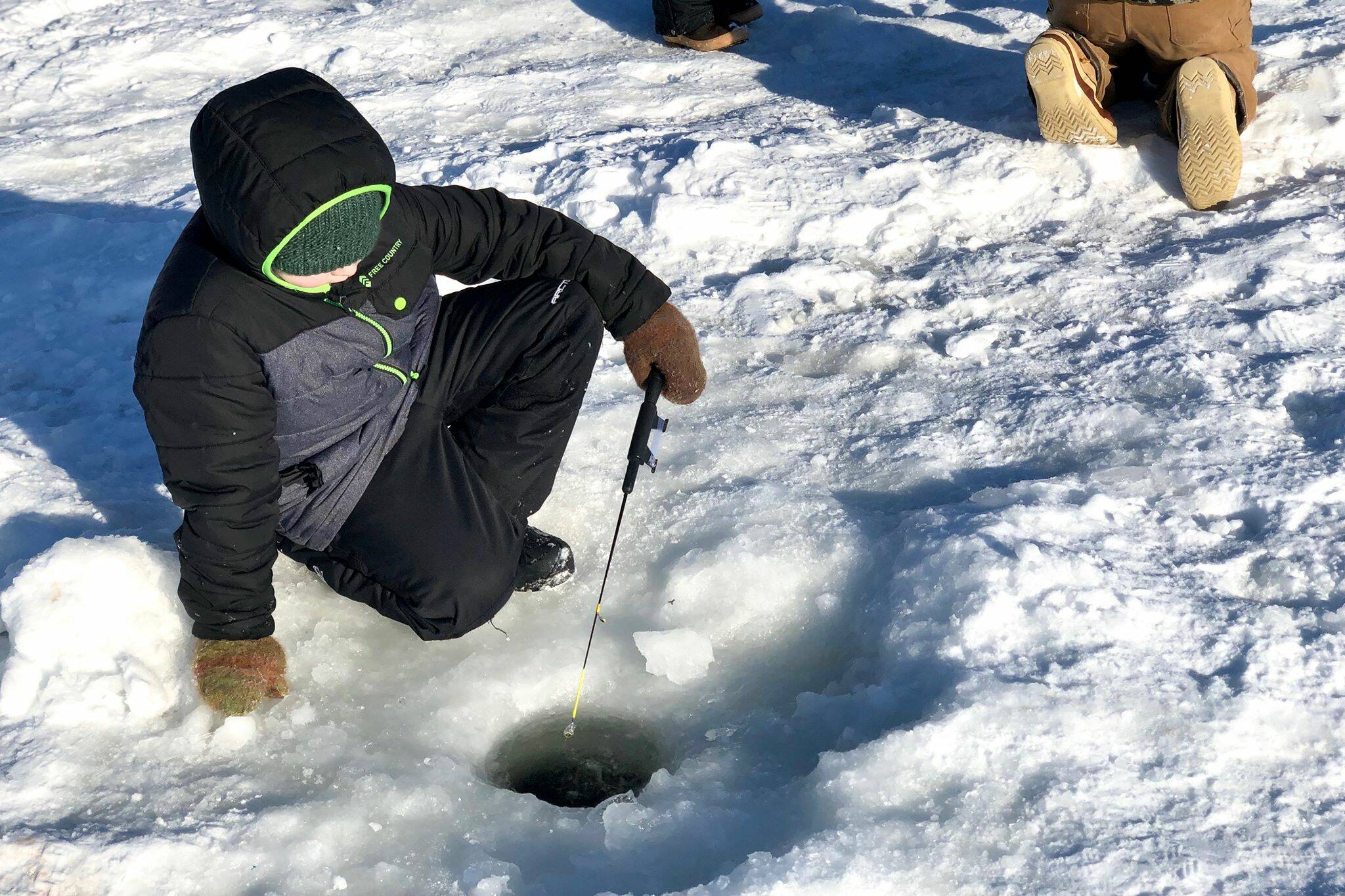“Versatility in your ice fishing gear is important.”
That’s the stance of Ryan Ragan, a program coordinator with the Alaska Department of Fish and Game, who led an online forum about ice fishing for the department last week. The seminar, called “Ice Fishing Gear, Tips and Tactics,” serves as an all-in-one guide on how to ice fish in Southcentral Alaska.
Ragan said personal safety, comfort on the water and equipment are key factors in planning an ice fishing excursion. For example, he said he won’t go out on ice thinner than 4 inches and always brings three pairs of gloves in the event one pair gets wet. That, of course, is in addition to making sure he’s carrying a valid current year sport fishing license and a copy of the current year sport fishing regulations.
On equipment “essential” to ice fishing, Ragan was clear: an auger, a bucket, a shovel, an ice scoop, an ice rod and a tip-up. Auger type, he said, really comes down to how much work the angler wants to put in. Some can dig holes by hand cranking, while others that are gas powered get the job done quickly.
Then comes the ice scoop, which is used to remove residual ice from the hole, and a shovel, which helps clear snow away from the hole. When it comes to actually catching fish, the need for an ice rod is a given. They’re shorter than other rods because they don’t need to be cast; often, the angler sits above the hole and jigs it.
Other nonessential items, Ragan said, include things like a tent, a space heater and a spud bar. Spud bars are useful for digging holes in ice that isn’t too thick, but don’t compare to tools like augers, he said.
Other nonessentials are electronic tools, which include depth sounders and cameras, which can detect movement of fish at different depths.
“The question will come up like ‘Are electronics really worth it?’ If you ask me, I will absolutely say yes,” Ragan.
But what about actually catching fish? That begins with scoping out a spot on the lake. One pro tip, Ragan said, is to start at the edge of the lake and see if anyone has fished there recently. Things to look for include holes already dug, pieces of bait or blood that may indicate a specific site was successful.
What type of fish someone is after will then determine an angler’s next moves. If someone has northern pike on their mind, for example, Ragan recommends using a tip-up in shallow water. Tip-ups allow an angler to step away from the fishing hole — a flag raises if a fish takes the bait.
Ragan said he usually uses herring and hooligan as bait on a wire leader strong enough to withstand northern pike’s sharp teeth. If he’s trying to catch a big pike, he’ll use a whole herring and put the hook through the fish’s dorsal fin before lowering it to just under the ice.
“The reason I do this is (because) I like to give this fish as much of a natural presentation as I possibly can,” Ragan said.
That’s not the case if he’s trying to snag a stocked species, such as rainbow trout, landlocked salmon or arctic char, in which case he’s more apt to use something like cured shrimp or cured salmon. As with fishing gear, Ragan said versatility is important.
“Experiment with this stuff,” Ragan said. “This is just about learning. It’s about finding what works for you on that particular day.”
The full forum can be viewed on ADF&G’s YouTube channel.
Reach reporter Ashlyn O’Hara at ashlyn.ohara@peninsulaclarion.com.

